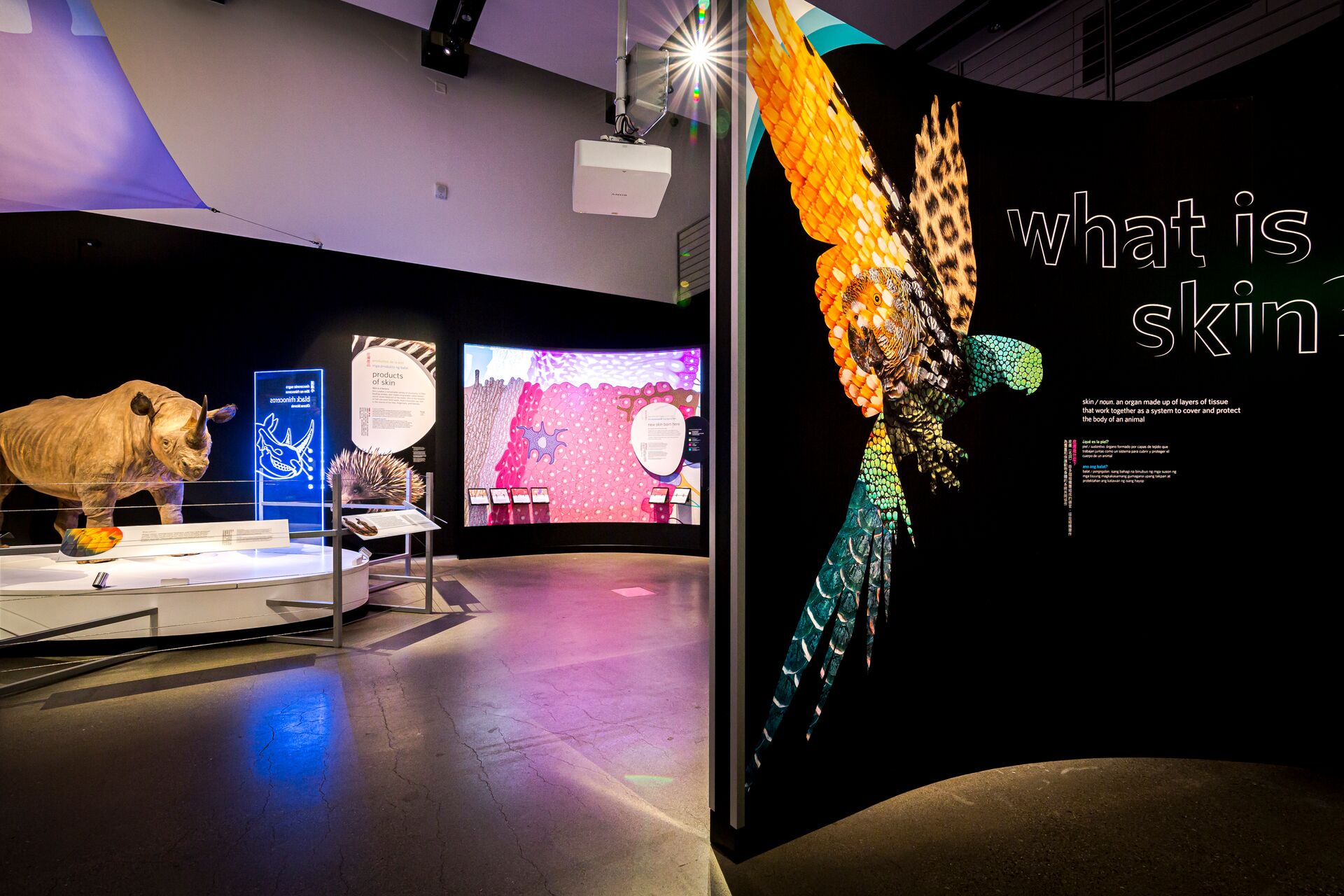Discover the shape-shifting, color-changing, and ever-evolving nature of skin. This exhibit included many elements, from diagrams and specimens, to video and interactive experiences. My role in this exhibit included illustrating for multiple video animations, as well as the overall illustration style for the information graphics. Additionally, I took part in development sessions to best determine what information should be included in our exhibit, ultimately deciding on a more scientific approach to skin as an organ, but also including the societal implications when it comes to skin. I also took part in the research to better understand the scientific elements I was depicting. This exhibit was created with the help of a multidisciplinary team of content developers, 3d designers, animators, and scientists.
Skin Exhibit
Information / Animation / Design
Jan 2018 — Jul 2019









